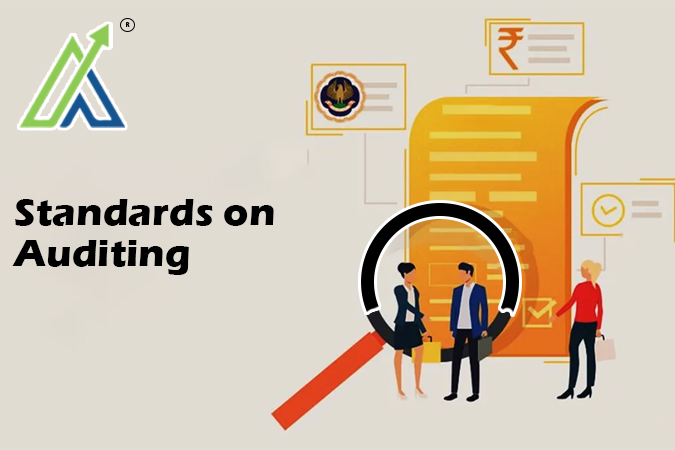Standards in auditing are the standards that are made for auditors to ensure accuracy, consistency, and accuracy in their work. To ensure the quality of financial statements, the Institute of Chartered Accountants (ICAI) formed a body named the Auditing and Assurance Standards Board. These standards are aligned with those of the International Auditing and Assurance Board (IAASB).
The are 38 standards falls under standards on auditing and they are categorised into 6 categories that are given below: –
- 100-199: Introductory Matters (Nil Standard)
- 200-299: General Concepts and Accountabilities (9 Standards)
- 300-499: Risk Assessment and Response (6 Standards)
- 500-599: Audit Evidence (11 Standards)
- 600-699: Using Work of Others (3 Standards)
- 700-799: Audit Reporting & Conclusions (6 Standards)
- 800-899: Specialized Areas (3 Standards)
Important features of Standards on Auditing
Here are some important features that are laid down below: –
Auditing Based on Risk: – In this type of audit the auditor is required to find the reasonable assurance that there is no material is misstated by the way of fraud or errors exist in the financial statements. This type of auditing includes: –
- Evaluating the risks of material discrepancies
- Creating and carrying out additional audit processes that address identified risks and bring the likelihood of major misstatements in the financial statements down to a manageable level
- Releasing a suitable audit report in accordance with the audit evidence gathered.
Flexibility: – ICAI issued standards that are applicable for audits of all entities. This means that while using these standards, the entity’s size, legal structure, and nature are all irrelevant. The International Federation of Accountants (IFAC) is of the opinion that high-quality auditing standards ought to be able to be applied to audits of the financial statements of businesses of varying sizes, and in fact, they are capable of doing so.
Professional Uncertainty: – “An attitude that includes a questioning mind, being alert to conditions which may indicate possible misstatement due to error or fraud, and a critical assessment of audit evidence” is how the Overall Objectives of the Independent Auditor and the Conduct of an Audit in Accordance with Standards on Auditing define professional skepticism.
Professional Perception: – An auditor must adhere to procedures in order to compile sufficient pertinent audit evidence to back up their judgments and form a fair opinion. The auditor determines which processes must be completed using professional judgment. The auditor is forced to depend on their training, experience, and professional skepticism as a result.
Certainty: – The idea of materiality is included in the auditing standards. If an information’s absence or inaccuracy has the potential to affect users’ financial decisions based on the financial statements, it is considered significant. Materiality varies depending on a company’s size and unique set of conditions.
Audit Proof: – The series 500–599 standards on auditing include comprehensive instructions on how to gather adequate and relevant audit evidence. Guidance on external confirmations, sampling, and particular areas such physical inventory verification observation, accounting estimations, and connected parties are included in this.
Documentations: – The record of audit processes carried out (including audit planning), pertinent audit evidence gathered, and conclusions drawn by the auditor is known as audit documentation. For audit documentation, phrases like “working papers” or “workpapers” are occasionally used.
Questions to Understand your ability
Ques1: Why do we need Standards on Auditing?
- To create financial statements
- To make sure auditing is accurate and consistent
- To manage company finances
- To set tax regulations
Ques2: Who set up the Auditing and Assurance Standards Board?
- International Auditing and Assurance Board
- Institute of Chartered Accountants (ICAI)
- International Federation of Accountants (IFAC)
- Financial Accounting Standards Board (FASB)
Ques3: How many standards are in the Audit Evidence category?
- 9
- 6
- 11
- 3
Ques4: What does “Professional Skepticism” mean in auditing?
- Trust everything management says
- Always question and critically assess audit evidence
- Ignore potential errors
- Accept all provided info without checking
Ques5: Which standards guide on collecting audit evidence?
- 200-299
- 300-499
- 500-599
- 600-699
Conclusion
Overall, the auditing standards set by ICAI and that are in line with IAASB make sure that audits are of high quality, accurate, and consistent. There are rules about risk assessment, flexibility, professional doubt, materiality, and paperwork. These are all meant to help auditors give accurate and complete audit reports for all organizations, no matter how big or small they are.
FAQ’s
They’re rules to make sure auditing is done right and the same way every time.
The Institute of Chartered Accountants (ICAI) sets them up through the Auditing and Assurance Standards Board.
They’re split into six groups, each focusing on a different part of the auditing process.
There are rules about how to get and use data to back up audit results in this group (500–599).
It’s when auditors look for and address risks of big mistakes in the financial statements, whether from fraud or errors.
Yes, they’re flexible and can be used for any entity, no matter the size or type.
Auditors use their judgment to decide what steps to take and how to evaluate the evidence they find.
It keeps track of what was done during the audit, what proof was gathered, and what conclusions were drawn. This makes the process clear and responsible.

